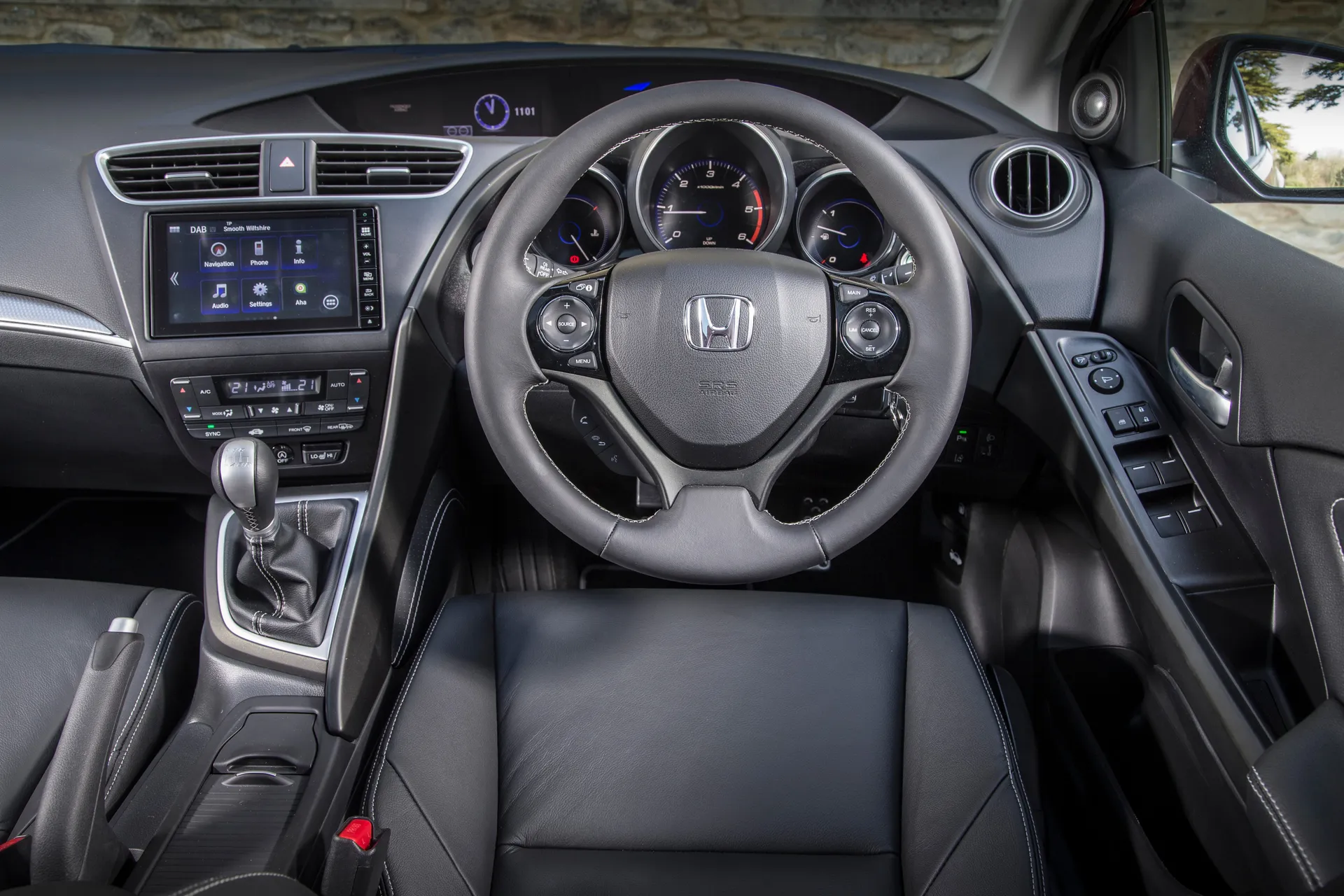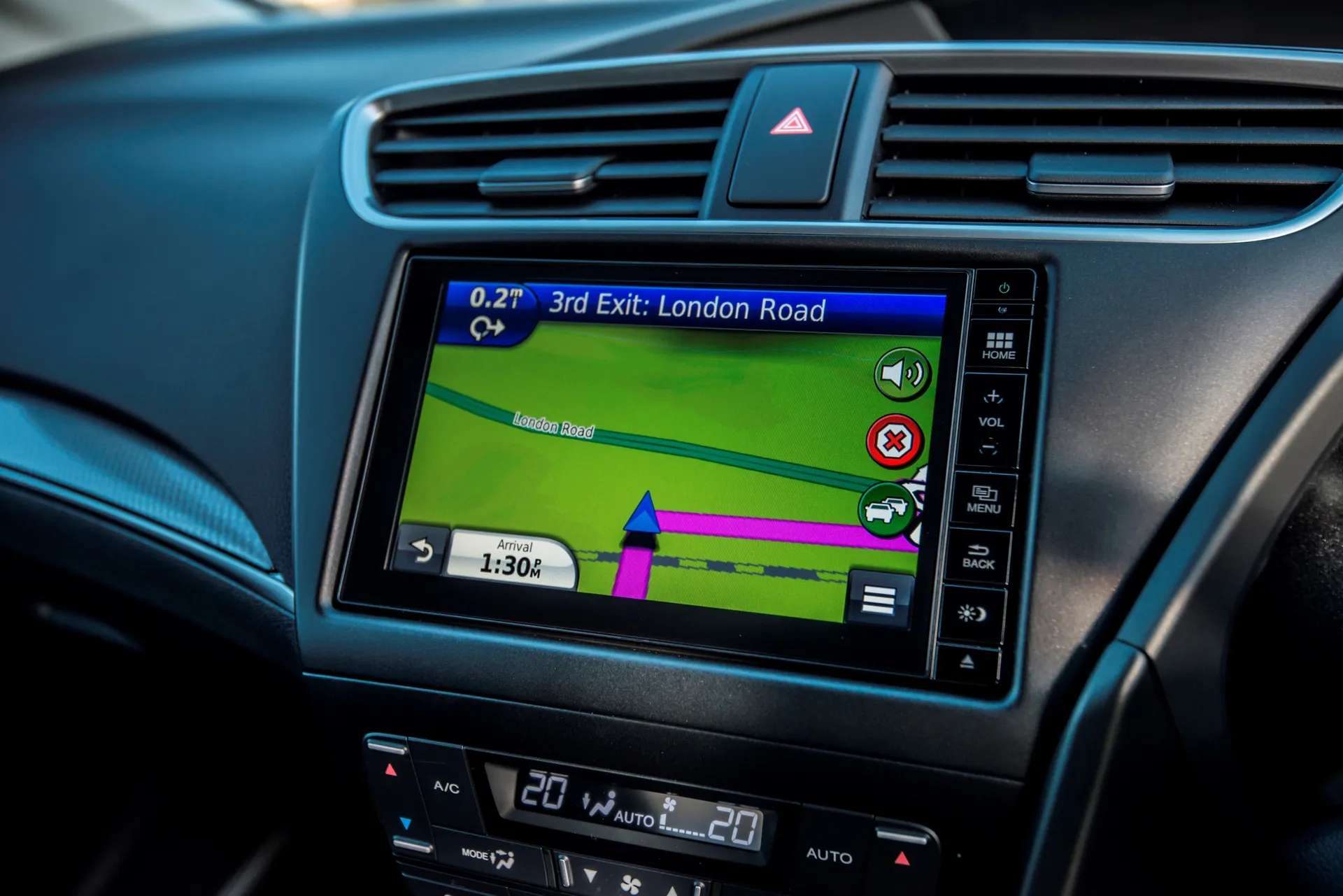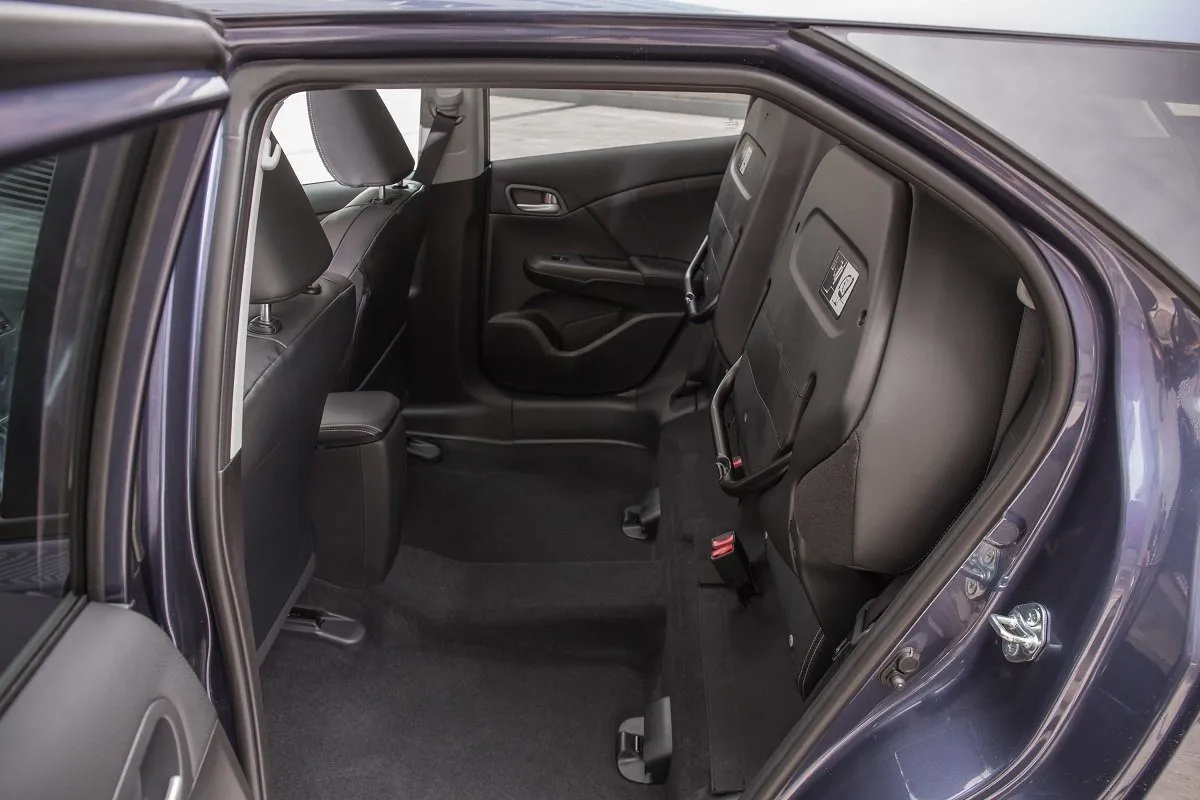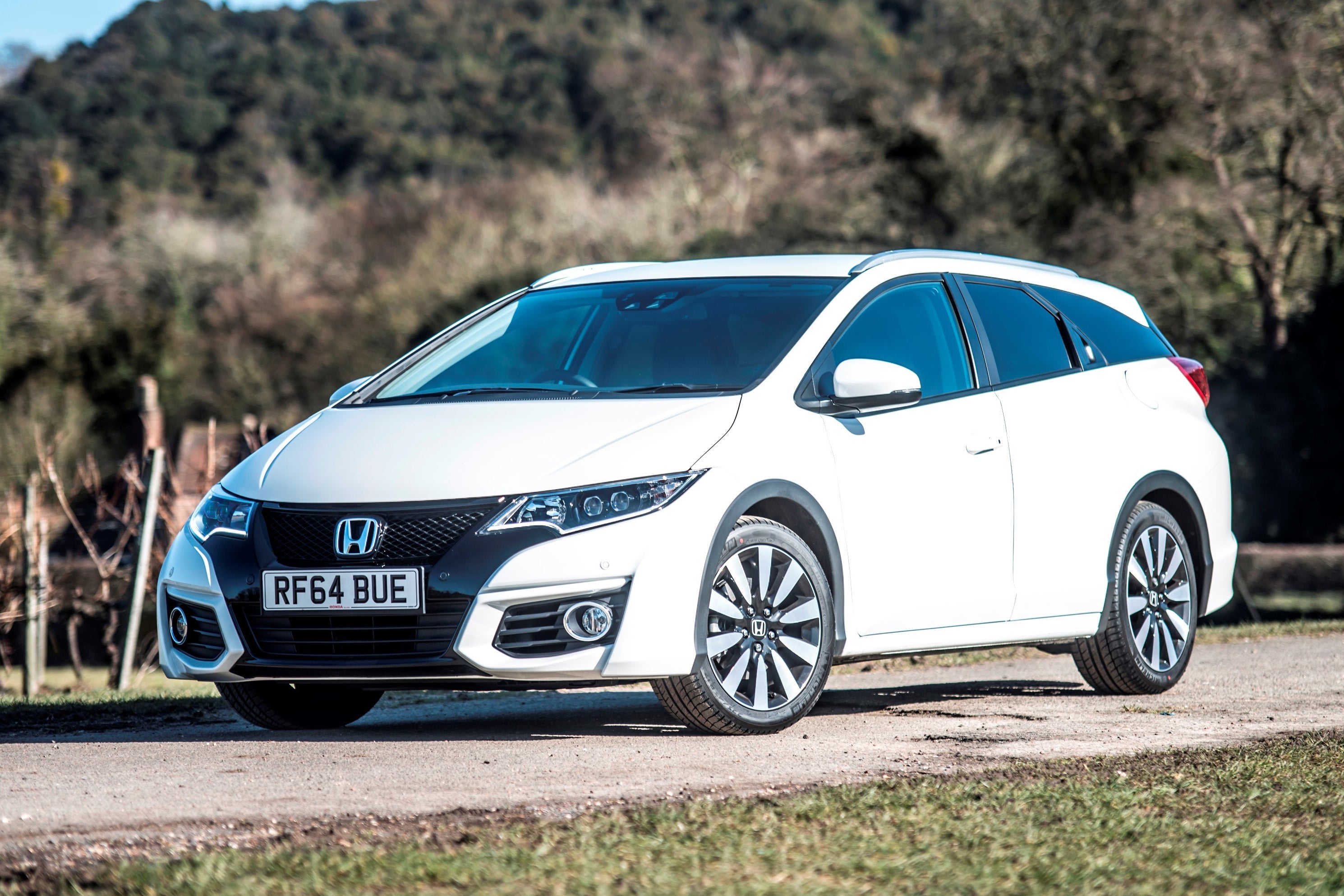Honda Civic Tourer (2014-2017) Review
Written by Andrew Brady
- 2014
- Estate
- Petrol, Diesel
Quick overview
Pros
- Frugal diesel
- Sturdy build quality
- Huge boot
Cons
- Uninspiring petrol
- Fiddly infotainment
- Limited model range
Overall verdict on the Honda Civic Tourer
"In this Honda Civic Tourer review we are taking a look at a compact estate car that majors on space and practicality, and while the Civic Tourer may not be as fun to drive as some of its rivals as a load-lugger it is hard to beat."

It’s an alternative to similar vintage estate versions of the Volkswagen Golf, Ford Focus and Peugeot 308, but can claim to be more spacious and better built than all of them.
Inside, everything feels sturdy. Okay, so the plastic quality isn’t as consistently high-end as in a Golf, but it gets close and, if anything, the Honda feels more robust.
A bigger problem is the fiddly sat-nav. Instead of fitting a neat OEM unit, the Honda gets a Pioneer system that’s clunkily integrated and fiddly to use. Even after months of ownership, you won’t master it like you can a Volkswagen’s system.
On the upside, the Honda combines plentiful rear legroom with a boot that’ll swallow everything you need for a family holiday and is easy to load. The Honda’s even got a trick up its sleeve in the form of its Magic Seats, which free space to carry tall items in the rear passenger footwell.
Load up, hit the road and you’ll find the Honda offers a balanced driving experience. Okay so it’s not quite as engaging as a Ford Focus but it’s still fun to run around in and high-end models get fancy adjustable dampers. Even on a cruise, it’s quiet and comfortable.
In town, the Honda’s light controls make it easy to drive and all but the basic model gets front sensors and a reversing camera to make parking a doddle. There are two engines to choose from – a 142PS 1.8-litre petrol or a 120PS 1.6-litre diesel. It’s the latter we would choose because it offers better real-world performance along with fuel economy that’s about 50% more than the petrol manages. The petrol may have more horsepower, but it just doesn’t feel like it.
And while we’re making recommendations, aim to bag yourself an SE Plus model which comes with dual climate control, plus auto lights and wipers.
Fancy something a bit posher? Then get an SR model, they come stacked full of features including the aforementioned clever dampers, climate control, sat-nav and a full leather interior. Honda’s tend to cost a little bit more than their rivals, but a little bit of depreciation does wonders to the price you’ll pay.
Not only will a Civic Tourer offer you loads of space in a stylish, cheap-to-run package, but you can also expect 100% reliability, a factor that’s sure to sway in the Honda’s favour if you're considering it as a second-hand buy.
Is the Honda Civic Tourer right for you?
If you want a family car that majors on quality but isn’t quite as obvious a choice as a Golf then your money will be spent wisely on a Honda Civic Tourer. As well as feeling like it has been hewn from stone, the Civic has more interior space than it’s Volkswagen counterpart and similar running costs.
It’s also great to drive on a variety of different roads and it’s available with optional adjustable dampers so you can set the car up to be either firm and sporty or comfy and cosseting.
This combination of style, quality and extremely low running costs means the Civic Tourer is a car anyone would love to have on their drive.
What's the best Honda Civic Tourer model/engine to choose?
Choosing which engine to have with your Civic Tourer is easy – get the diesel. The 1.6-litre diesel is smoother and quieter than Honda’s 1.8-litre petrol and, despite what the on-paper figures might have you believe, is also quicker in real-world driving situations.
The only reason you should choose the petrol model is if you need the automatic, it’s the only engine Honda offers with its five-speed auto.
Choosing the best model is trickier. Honda Civic Tourer SE Plus versions are the most popular and come with kit such as a reversing camera, auto lights and wipers and cruise control. That said, SR versions shouldn’t cost a huge amount more and come with desirable additional kit such as sat-nav and a full leather interior.
What other cars are similar to the Honda Civic Tourer?
There are plenty of other options to choose from if you’re in the market for a Honda Civic Tourer. An obvious one is the Volkswagen Golf Estate. It’s about as well rounded as a car can possibly be – easy to drive and fun, well built, practical and well equipped. It also has a huge range of engine, drive and trim combinations to choose from but, beware, it can’t compete with the Honda on boot space.
Fancy something that’s more fun? Then the Ford Focus Estate offers more smiles per mile? Want a dependable workhorse? Then how about the Skoda Octavia Estate or it’s larger sibling the Skoda Superb Estate? Both have more room and can be had for the same money as a second-hand Honda.
Comfort and design: Honda Civic Tourer interior
"The Honda Civic Tourer has a more interesting looking interior than you might expect for a sensible family car. "

In the centre of the instrument binnacle, you get a sporty looking centre rev counter flanked by circular temperature and fuel gauges. All of which are easily visible as they’re framed by the top half of the steering wheel.
Above them, you get a clear digital display with a speedometer and a separate display off to the side covering information such as what radio station you’re listening to. Meanwhile, on the jutting centre console (on mid-range models and above) you get an aftermarket infotainment screen – that isn’t as well-modulated as a Volkswagen Golf’s OEM display – and controls for the car’s ventilation system.
The gear knob falls right to the palm of your hand and the way the dashboard arcs from the centre console behind the steering wheel and into the driver’s door makes you feel cocooned like you’re driving something sporty.
It looks great but isn’t quite as logical to use as a Volkswagen Golf and at times you find yourself hunting for buttons that you’d easily find in the Volkswagen. That said, Honda should be commended for stamping its unique character on the car.
Quality and finish
There’s an overriding feeling of quality to the Honda Civic Tourer interior. The top half of the dashboard and the doors are finished in soft-touch plastics, gaps between trim pieces are consistent and everything feels solid.
It feels better built than a Ford Focus estate and it’s only when you look lower down in the cabin that you’ll find harder plastics that aren’t as plush as the ones in a Golf.
Even basic Honda Civic Tourer S models get a leather-wrapped steering wheel and gear knob and climate control that lets you set the temperature of the interior. SE Plus cars get dual climate control so you and your front-seat passenger can set your temperature, while Honda Civic Tourer SR models feel plusher still.
As well as being the first model to get fitted with a central touchscreen sat-nav system, they also get sporty aluminium finished pedals and a full leather interior, which adds a luxurious feel and includes heated front seats.
Moving up to EX Plus, meanwhile, adds electrically adjustable lumbar and side support to both front seats. These top-end models are tricky to find on the used market, though.
Infotainment: Touchscreen, USB, nav and stereo in the Honda Civic Tourer
S and SE Plus version of the Honda Civic Tourer are the only versions to do without the centrally located touchscreen and the stereo buttons left in its place look messy.
Even the basic stereo has eight-speakers, can stream music from your phone wirelessly using Bluetooth and comes as standard with a USB plug for charging. You also get steering-wheel-mounted controls so you can turn up the volume and skip tracks without taking your hand off the wheel.
SR models and above swap the conventional buttons on the centre console for a Pioneer supplied seven-inch touchscreen. Unfortunately, it’s not the best system.
Its tiny conventional buttons are fiddly to use (although you get a large volume knob), the screen itself isn’t very responsive and the on-screen menus are extremely confusing – even tuning the radio can be a head-scratcher. The OEM system fitted to a Golf Estate wins hands for ease of use.
Unfortunately, this generation of Civic Tourer wasn’t available with Apple CarPlay or Android Auto so you can’t circumvent Honda’s fiddly system by using the more natural interface on your smartphone.
Space and practicality: Honda Civic Tourer boot space
The Honda Civic Tourer is more practical than the hatchback, and not just because it has a bigger boot.
First of all, getting comfortable upfront is easy. All models come with a steering wheel that telescopes towards you and is adjustable for height, and the driver’s seat is also adjustable for height. The seat sits high giving you a decent view out but it’s a shame you can’t set it low enough to give you a hunkered-down feel befitting of the cabin’s sporty design.
Ah well, at least it’s practical. Underneath the front centre armrest, you’ll find a space to hide valuables, there are pockets in all four doors and you even get an illuminated passenger vanity mirror hidden behind the sun visor – just like in a posh German saloon.
There’s even less to complain about in the back. Because the estate has flat roof roofline, rear-seat headroom is improved compared to the more swoopy styled hatchback and there’s also enough knee room for tall adults to get comfortable. All but the basic S models also get a fold-down centre armrest in the back seat.
The Honda’s rear doors open at 90 degrees giving you great access to fit a child seat to the Isofix points that are located on both of the outer rear seats.
Something unique to the Civic is its Magic Seats. Okay, so they’re not quite as mind-blowing as a Dynamo routine but it does mean the bottom half of the rear chairs is hinged – like a cinema chair – and can be locked into position allowing you to carry tall items like house plants without damaging the car’s roof lining.
There’s even better news to come when you open the boot. The Honda Civic Tourer has a huge 624-litre boot capacity that dwarfs the 490-litres you get in a contemporary Ford Focus Estate. Of cars this size, only the Peugeot 308 SW’s boot is bigger. Loading is also easy because the boot opening is square, the rear wheel arches are recessed neatly into the cabin and the floor is completely flat.
You even get additional storage under the boot floor which is ideal for hiding larger valuables like camera equipment. Unfortunately, this is only possible because all Civic’s come with a tyre repair kit rather than a spare wheel.
The Honda Civic Tourer's dimensions are 4535mm long, 2065mm wide and 1480mm tall.
Handling and ride quality: What is the Honda Civic Tourer like to drive?
"Efforts have been made to make the Honda Civic Tourer (2014-2017) significantly more comfortable than the model it replaces, and you can feel it. It’s still a little choppy over bumpy town roads but as the speeds rise so do the comfort levels meaning manhole covers and motorway expansion joints are barely noticeable. "

A feature you won’t find in many of the Civic’s rivals is its adaptive dampers which are fitted to SR models and above and feature Normal, Comfort and Dynamic settings. Comfort mode loosens up the car’s dampers to iron out bumpy roads, Sport firms them up to give you more control in bends, while normal gives you a best-of-both-worlds blend of the two.
The clever dampers also offset the slightly stiffer ride delivered by top-end models’ 17-inch alloys, which are an inch bigger than the ones found on the entry-level model.
All models are solid to drive. The Honda leans a little bit in bends but the steering’s weightiness makes the car easy to place on the road and the tight mechanical feel of the car’s six-speed manual gearbox is a joy to work. Okay, so it’s not quite as entertaining to drive as a Ford Focus, but it gets close.
At slower speeds around town the Honda’s light controls mean you won’t knacker yourself in stop-go traffic and parking is made super easy in all but basic S models because the front and rear parking sensors, and a rearview camera come fitted as standard.
What engines and gearboxes are available in the Honda Civic Tourer?
Engine ranges don’t come much simpler than the 2014-2017 Honda Civic Tourer , you only get two to choose from – one petrol and one diesel.
Of the two, the diesel is the one to go for. It’s 1.6-litre four-cylinder engine produces 120PS which is slightly down on what the petrol offers but, crucially, it doesn’t feel like it. The diesel copes well when the car is fully loaded and has plenty of grunt for motorway overtakes. It gets from 0-62mph in 10.1 seconds and has a top speed of 121mph meaning there’s plenty in reserve at the UK national limit.
Mind you, the diesel’s excellent fuel economy is a lot more relevant – Honda quoted nearly 75mpg in the old-school combined cycle, which means you’ll see 60mpg at a steady cruise. It’s also worth noting that even early 2014 cars are exempt from London’s ULEZ charge. That’s also true of Honda’s 142PS 1.8-litre four-cylinder petrol.
On paper, it has more power than the diesel, but in reality, you have to work it hard to get the best from and it sounds strained as you do it. All the petrol has going for it is its slightly cheaper price and the fact that it’s the only model available with Honda’s five-speed automatic gearbox, although it makes the performance even more wheezy.
As you’d expect, the petrol doesn’t get near the diesel’s fuel economy, expect it to return around 40mpg although engine start-stop (also fitted to the diesel) helps add a few MPGs around town.
Refinement and noise levels
Honda made big efforts to make this Civic quieter than the car it replaced and it was given extra sound deadening around the rear wheel arches, in the roof and under the bonnet, improved door seals and thicker side window glass.
In practice, this means there’s little tyre or wind noise on the motorway and you won’t hear the suspension thumping over bumps at slower speeds. The diesel model’s lazy power delivery makes it quietest of all – allowing you to make swift progress without having to work it – and Honda’s done a good job of filtering out vibrations.
The petrol model’s peakier power delivery means it’s noisier than the diesel if you’re making swift progress but even it is quiet at a steady cruise on the motorway.
Safety equipment: How safe is the Honda Civic Tourer?
The Honda Civic Tourer (2014-2017) was never crash-tested by Euro NCAP but you’d expect it to perform as well as the hatchback that was awarded five stars by NCAP in 2012. It’s worth bearing in mind that NCAP’s testing procedures have become significantly tougher since.
Still, this generation Civic isn’t short on safety kit. All models come with a full complement of airbags and ABS brakes that can sense an emergency stop and assist you in applying full braking force to the road. It’ll even activate the car’s hazard lights if you brake hard to warn drivers behind you.
For maximum safety, keep an eye out for SE Plus models and above which were available with the optional Driver Assistance Safety Pack 1 and Pack 2.
The former adds a blind-spot warning system that’ll warn you if you start pulling out in front of another car on the motorway, the same system will also alert you if you start drifting out of lane without indicating.
Pack 1 also includes headlights that dip their main beam automatically when they sense another car, Forward Collision Warning which can alert you to an imminent forward collision if you’re distracted and a traffic sign recognition system which displays traffic sign information – such as the current speed limit – onto the car’s infotainment screen.
Pack 2 is even better. It adds to all that kit with automatic emergency brakes that’ll stop the car if they sense an imminent collision. This system includes active cruise control, so you can set your cruising speed and let the car handle accelerating and braking. It’ll reduce your speed for slow-moving traffic before returning to your pre-set speed when the road is clear.
MPG and fuel costs: What does a Honda Civic Tourer cost to run?
Thanks to an aerodynamic body and efficient engines, the Honda Civic Tourer is capable of some impressive fuel consumption figures, although you'll have to go very gently if you want to match the official claims.
The diesel is, as you'd expect, comfortably the most frugal with a claimed overall figure of 74mpg, but in the real world you should still find that translates into 40 or even 50mpg if you go carefully. The petrol claims 44mpg with a manual gearbox and 42mpg with the automatic, so you'll be looking at 30mpg in the real world - it's hard to make a case for the petrol over the diesel.
Insurance groups and costs
"The Civic Tourer that is cheapest to insure is the 1.8-litre petrol model in basic S trim – it qualifies for group 13 insurance, two groups below a diesel version of the same trim level."

Sportier looking SR and EX Plus models rise to group 16 insurance but you can expect this to have a minimal effect on your premium.
That being said, the Honda is likely to be noticeably more expensive to insure than a Golf – a 2015 1.6-litre diesel Golf in mid-level SE trim qualifies for insurance group 11.
VED car tax: What is the annual road tax on a Honda Civic Tourer?
Road tax for the Honda Civic Tourer ranges from being completely free – for a 1.6-litre diesel on 16-inch alloys, which produces 99g/km of CO2 – to £220 per year for the petrol model fitted with an automatic gearbox and larger 17-inch wheel. In that specification, the Honda produces 155g/km of CO2.
How much should you be paying for a Honda Civic Tourer?
"The Honda Civic Tourer cost between £18,795 - £27,695 when it went on sale in 2014."

The most popular model is the 1.6-litre diesel in SE Plus trim, you’ll pick up a leggy example with more than 100,000 miles for around £5000. A similar car with half the mileage will cost you closer to £10,000.
A late-2017 car with less than 30,000 miles will cost closer to £12,000, while you’ll pay a £2000 premium for a sporty looking and better equipped SR version.
Top-of-the-range EX Plus models are extremely rare. At the time writing, we could only find one example on sale – it was a diesel manual with 75,000 miles, on sale for £11,000.
Trim levels and standard equipment
The Honda Civic Tourer (2014-2017) might have been quite expensive next to rivals, but even basic models came well equipped. The Honda Civic Tourer S grade kicks off the range and has a standard equipment list that includes 16-inch alloy wheels, climate control, a leather-trimmed steering wheel and gear knob, LED daytime running lights, electric windows all round and an eight-speaker stereo.
Honda Civic Tourer SE Plus cars add automatic lights and wipers, front and rear parking sensors, a back seat armrest, a reversing camera and cruise control. Petrol versions also get 17-inch alloys as standard, while diesels kept the 16-inch versions to lower CO2 emissions.
Honda Civic Tourer SR models are the first to get sat-nav as standard and the colourful seven-inch screen instantly makes the Honda feel more modern inside. The standard leather interior also makes it feel posher and includes heated front seats, while the adjustable dampers are another notable kit addition.
That leaves top-of-the-range (and extremely rare) Honda Civic Tourer EX Plus models. They add keyless entry, electric lumbar adjustment on both front seats, adjustable side support on the driver’s seat, plus powerful HID (High-intensity discharge) headlights with washers.
Ask the heycar experts: common questions
Is the Honda Civic Tourer a good car?
Do Honda still make the Civic Tourer?
Is the Honda Civic an estate car?
Get our latest advice, news and offers
Keep me updated by email with the latest advice, news and offers from heycar.
By submitting you agree to our privacy policy



